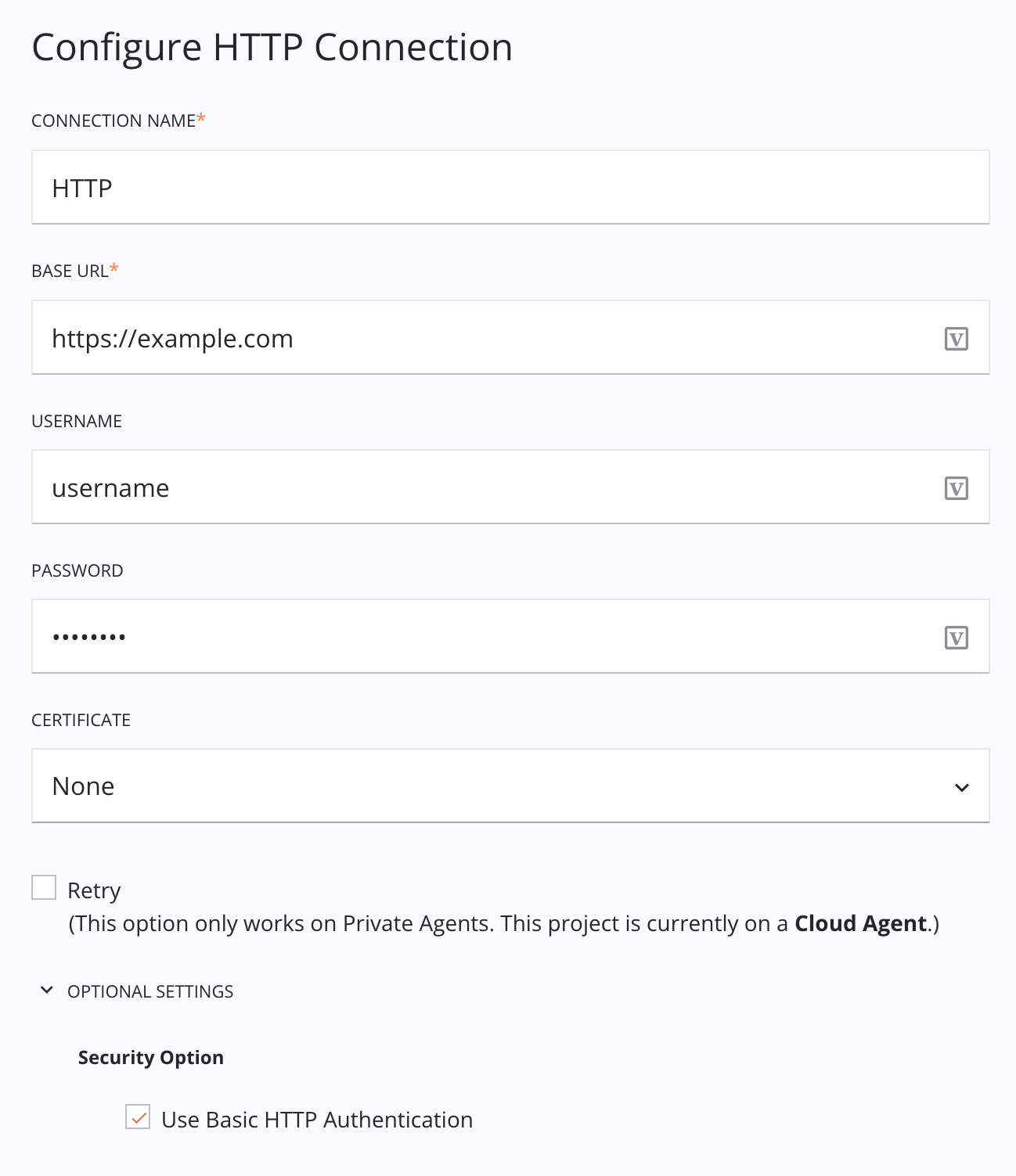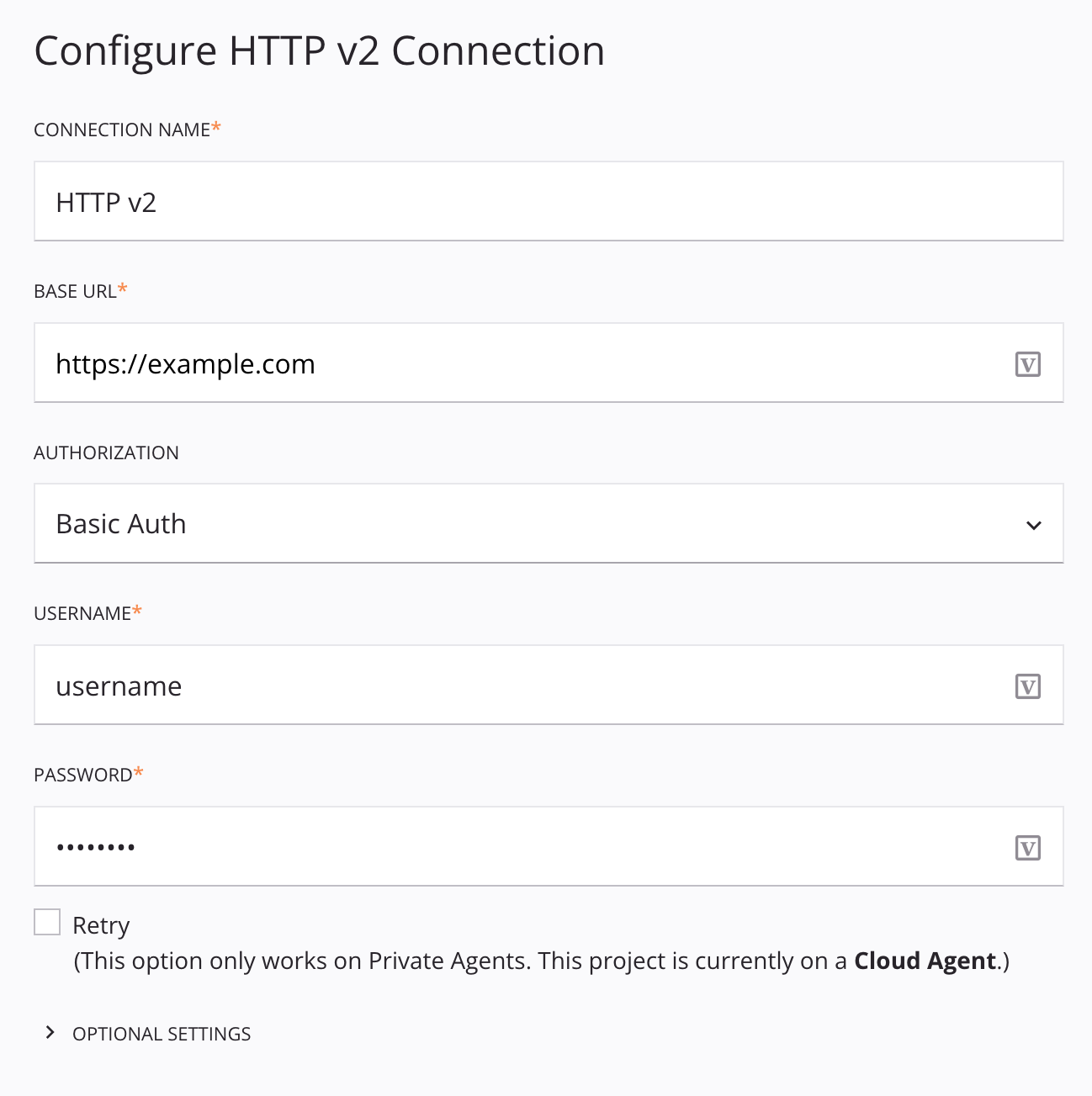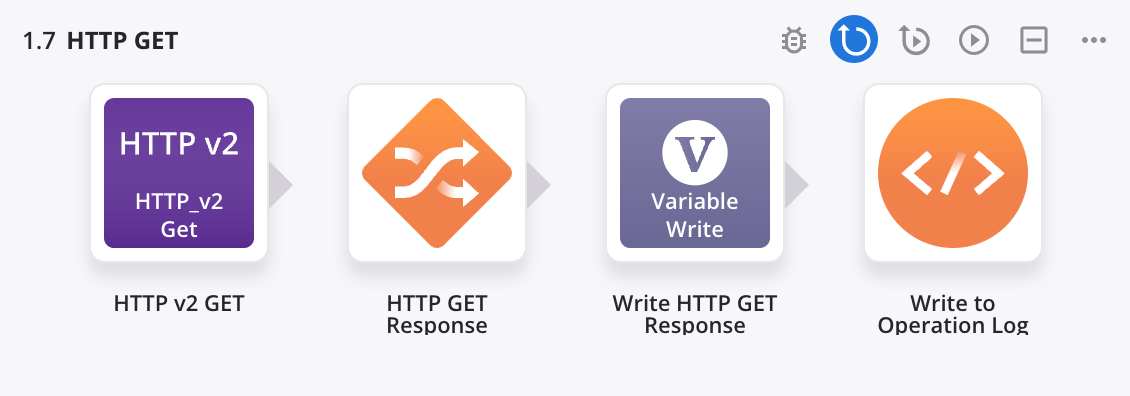Convert existing HTTP connections and activities to HTTP v2¶
Introduction¶
With the release of the HTTP v2 connector, we recommend converting existing HTTP connections and activities to HTTP v2. Learn more about the benefits of the HTTP v2 connector in our HTTP v2 blog post or see a comparison of HTTP and HTTP v2 connector features.
Jitterbit's long-term intention is to deprecate the HTTP connector, which will be announced in accordance with Jitterbit's End-of-life policy. At present, there is no timeline for deprecation and the HTTP connector remains fully supported.
Conversion steps for existing projects¶
In many cases, the configuration options for the HTTP v2 connector match up to the HTTP connector with minor differences in how the options appear. The following conversion steps describe how to transfer configuration information from an existing HTTP connection and its associated activities to their HTTP v2 counterparts.
-
As a precaution, before making any changes, deploy the project so you have a restore point to revert to as necessary. Another recommended best practice is to make the following changes in a non-production environment first, then migrate the project to a production environment.
-
Create an HTTP v2 connection and then copy the values from the original HTTP connection to the new HTTP v2 connection. In the following example, note how HTTP's Use Basic HTTP Authentication optional setting corresponds to Basic Auth for HTTP v2's Authorization setting:
Tip
You can duplicate the browser tab displaying the Cloud Studio project to access both connections at once. Depending on your browser, you can generally duplicate a tab by right-clicking it and selecting Duplicate. This process also works for copying information between activities.


-
For each operation in the project containing HTTP activities associated with the connection replaced in the previous step, add an HTTP v2 activity of the same HTTP verb.

-
Copy the configuration values from the original HTTP activity to the new HTTP v2 activity placed next to it. Set request and response schemas as necessary for the new HTTP v2 activities in their configuration steps 2 and 3 with Yes, Use Saved Schema selected. Relevant request and response schemas can be identified by inspecting the relevant transformations and locating the schema names for each.
-
Remove the original HTTP activities from the affected operations:

-
Verify that the schemas and mappings in relevant transformations are as expected.
-
Deploy any changes to affected operations and verify that they function as intended. Repeat this process until all HTTP connections and activities in the project have been replaced.
-
As a best practice, use the project pane Components tab filter to find any unused HTTP activities and remove their remaining references.